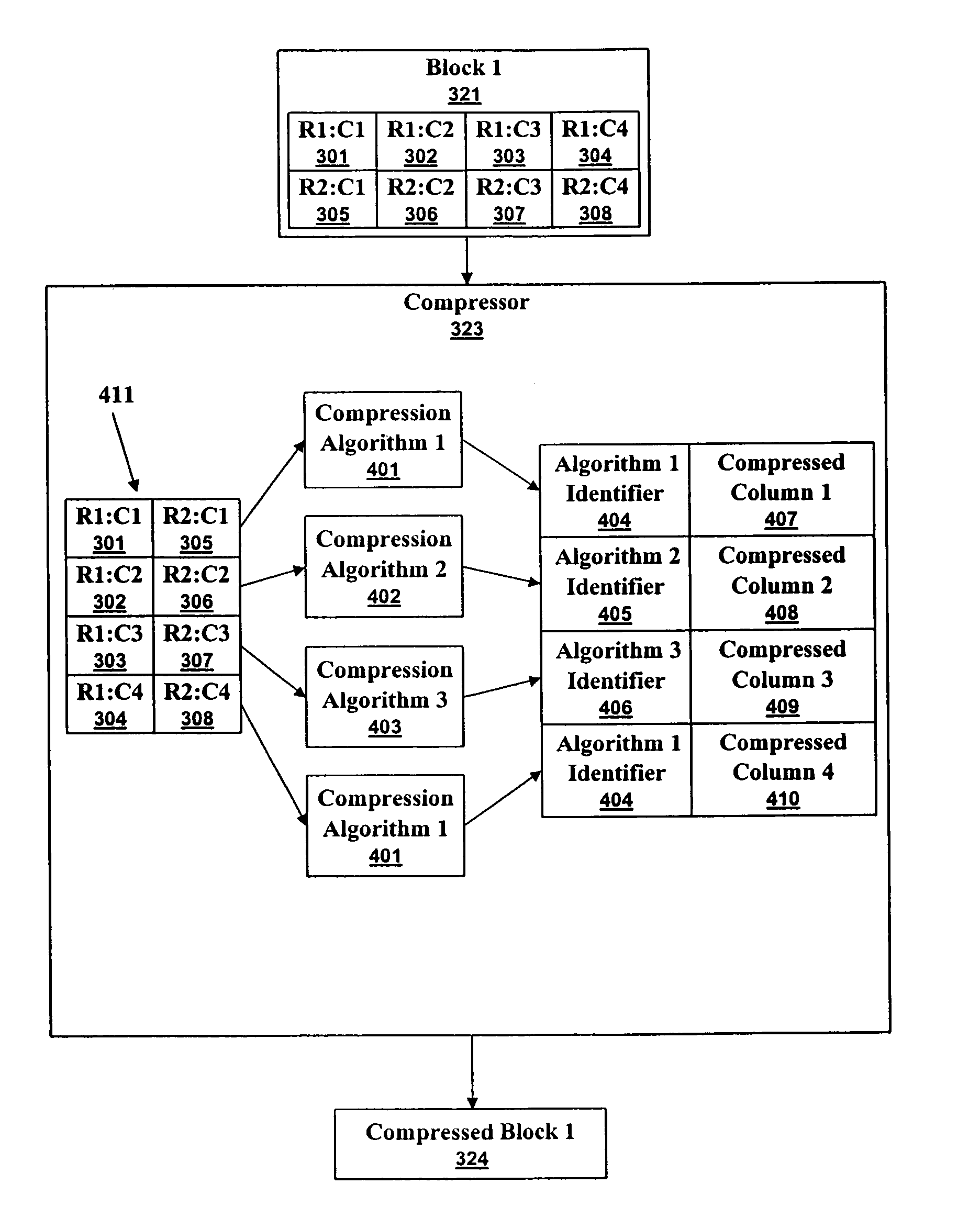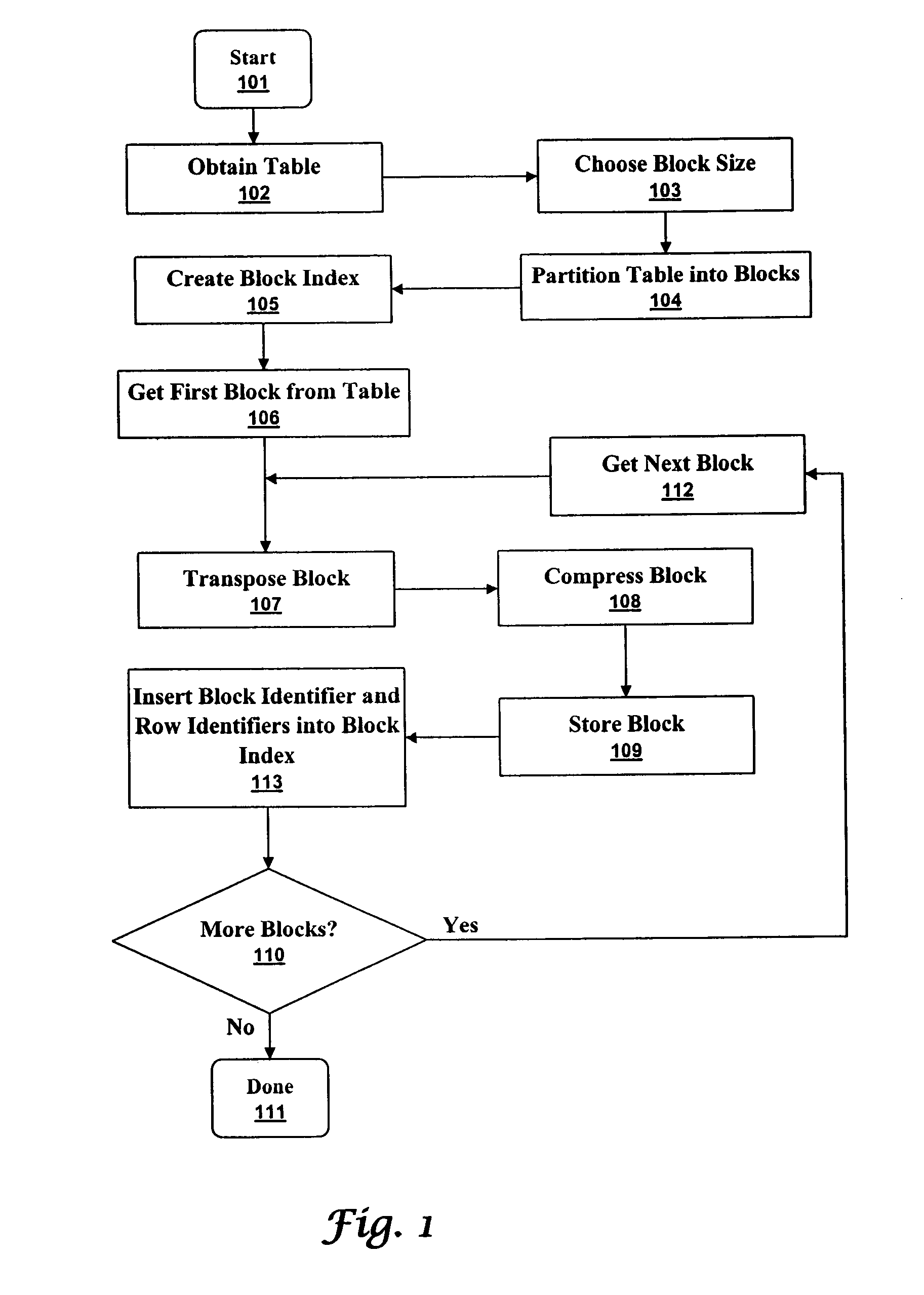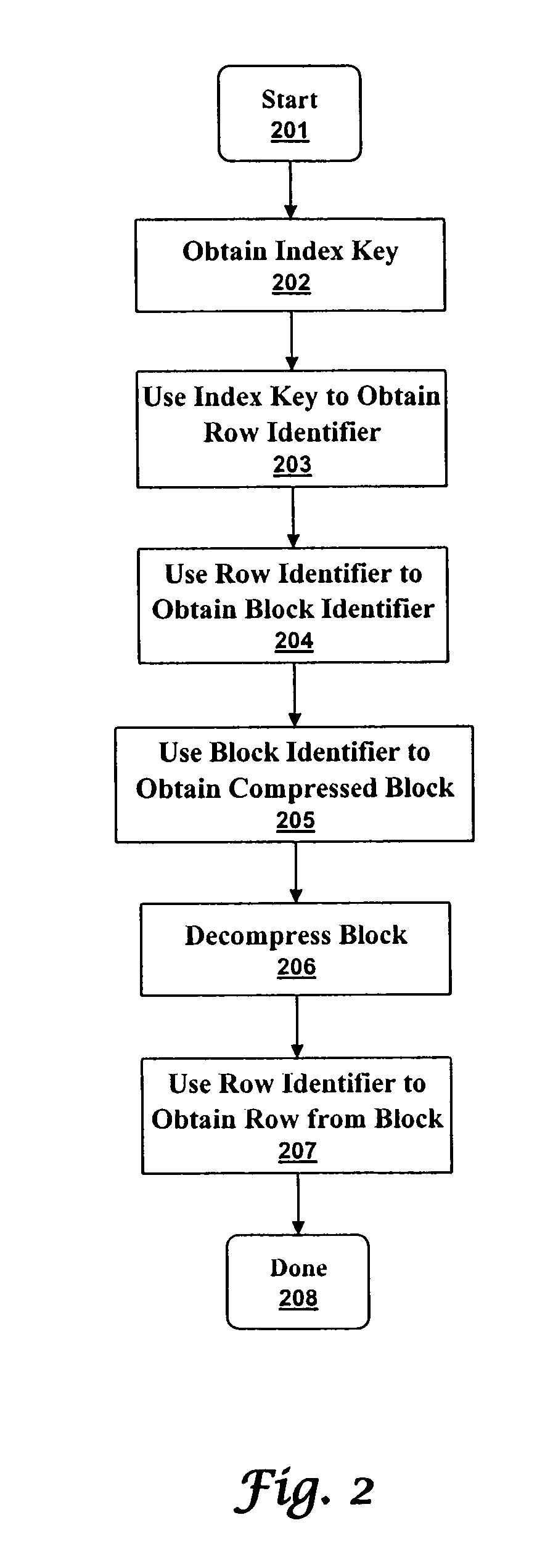Highly compressed randomly accessed storage of large tables with arbitrary columns
a random access and large table technology, applied in the field of data storage, data compression, and computer databases, can solve the problems of slow access to data in an exceptionally large database, expensive storage and maintenance of exceptionally large databases, and inability to store and maintain exceptionally large databases, etc., to achieve the effect of facilitating understanding
- Summary
- Abstract
- Description
- Claims
- Application Information
AI Technical Summary
Benefits of technology
Problems solved by technology
Method used
Image
Examples
Embodiment Construction
[0027]The particular values and configurations discussed in these non-limiting examples can be varied and are cited merely to illustrate embodiments and are not intended to limit the scope of the invention.
Overview
[0028]A table, such as a database table can be partitioned into blocks that are conveniently sized for storage and retrieval. The amount of storage space required and the speed of storing and retrieving blocks is related to the size of the blocks. Compressing the blocks leads to less required space and more speed. The columns in a table, and therefore the rows in a transposed block, tend to contain similar data. Compression algorithms can work more efficiently when sequential data items are similar. Therefore, transposing the blocks before compression or compressing them in a column-wise manner leads to better compression. Different compression algorithms can be used for each set of columnar data to yield even better compression.
High Level Process Flow
[0029]FIG. 1 illustra...
PUM
 Login to View More
Login to View More Abstract
Description
Claims
Application Information
 Login to View More
Login to View More - R&D
- Intellectual Property
- Life Sciences
- Materials
- Tech Scout
- Unparalleled Data Quality
- Higher Quality Content
- 60% Fewer Hallucinations
Browse by: Latest US Patents, China's latest patents, Technical Efficacy Thesaurus, Application Domain, Technology Topic, Popular Technical Reports.
© 2025 PatSnap. All rights reserved.Legal|Privacy policy|Modern Slavery Act Transparency Statement|Sitemap|About US| Contact US: help@patsnap.com



